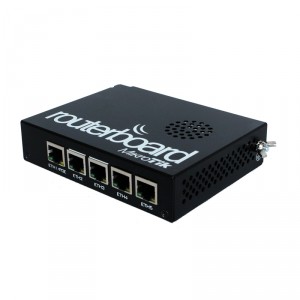Posts
2015
Time for a new GPG key
Chrome 43 stuck in HiDPI mode
cups.service start operation timed out in Fedora 22
PulseAudio popping with multiple sounds in Fedora 22
Adventures with GRE and IPSec on Mikrotik routers
Xen 4.5 crashes during boot on Fedora 22
You have a problem and icanhazip.com isn’t one of them
Keep old kernels with yum and dnf
Automatic package updates with dnf
Tweetdeck’s Chrome notifications stopped working
HOWTO: Mikrotik OpenVPN server
 Mikrotik firewalls have been good to me over the years and they work well for multiple purposes. Creating an OpenVPN server on the device can allow you to connect into your local network when you’re on the road or protect your traffic when you’re using untrusted networks.
Mikrotik firewalls have been good to me over the years and they work well for multiple purposes. Creating an OpenVPN server on the device can allow you to connect into your local network when you’re on the road or protect your traffic when you’re using untrusted networks.
Although Miktrotik’s implementation isn’t terribly robust (TCP only, client cert auth is wonky), it works quite well for most users. I’ll walk you through the process from importing certificates through testing it out with a client.
Rackspace::Solve Atlanta Session Recap: “The New Normal”
This post originally appeared on the Rackspace Blog and I’ve posted it here for readers of this blog. Feel free to send over any comments you have!
 Most IT professionals would agree that 2014 was a long year. Heartbleed, Shellshock, Sandworm and POODLE were just a subset of the vulnerabilities that caused many of us to stay up late and reach for more coffee. As these vulnerabilities became public, I found myself fielding questions from non-technical family members after they watched the CBS Evening News and wondered what was happening. Security is now part of the popular discussion.
Most IT professionals would agree that 2014 was a long year. Heartbleed, Shellshock, Sandworm and POODLE were just a subset of the vulnerabilities that caused many of us to stay up late and reach for more coffee. As these vulnerabilities became public, I found myself fielding questions from non-technical family members after they watched the CBS Evening News and wondered what was happening. Security is now part of the popular discussion.
Aaron Hackney and I delivered a presentation at Rackspace::Solve Atlanta called “The New Normal” where we armed the audience with security strategies that channel spending to the most effective security improvements. Our approach at Rackspace is simple and balanced: use common sense prevention strategies, invest heavily in detection, and be sure you’re ready to respond when (not if) disaster strikes. We try to help companies prioritize by focusing on a few key areas. Know when there’s a breach. Know what they touched. Know who’s responsible. Below, I’ve included five ways to put this approach into practice.
Run virsh and access libvirt as a regular user
 Libvirt is a handy way to manage containers and virtual machines on various systems. On most distributions, you can only access the libvirt daemon via the root user by default. I’d rather use a regular non-root user to access libvirt and limit that access via groups.
Libvirt is a handy way to manage containers and virtual machines on various systems. On most distributions, you can only access the libvirt daemon via the root user by default. I’d rather use a regular non-root user to access libvirt and limit that access via groups.
Review: Lenovo X1 Carbon 3rd generation and Linux

After a boatload of challenges with what I thought would be my favorite Linux laptop, the Dell XPS 13 9343, I decided to take the plunge on a new Lenovo X1 Carbon (3rd gen). My late-2013 MacBook Pro Retina (MacbookPro11,1) had plenty of quirks when running Linux and I was eager to find a better platform.
Share a wireless connection via ethernet in GNOME 3.14
There are some situations where you want to do the opposite of creating a wireless hotspot and you want to share a wireless connection to an ethernet connection. For example, if you’re at a hotel that offers only WiFi internet access, you could share that connection to an ethernet switch and plug in more devices. Also, you could get online with your wireless connection and create a small NAT network to test a network device without mangling your home network.


